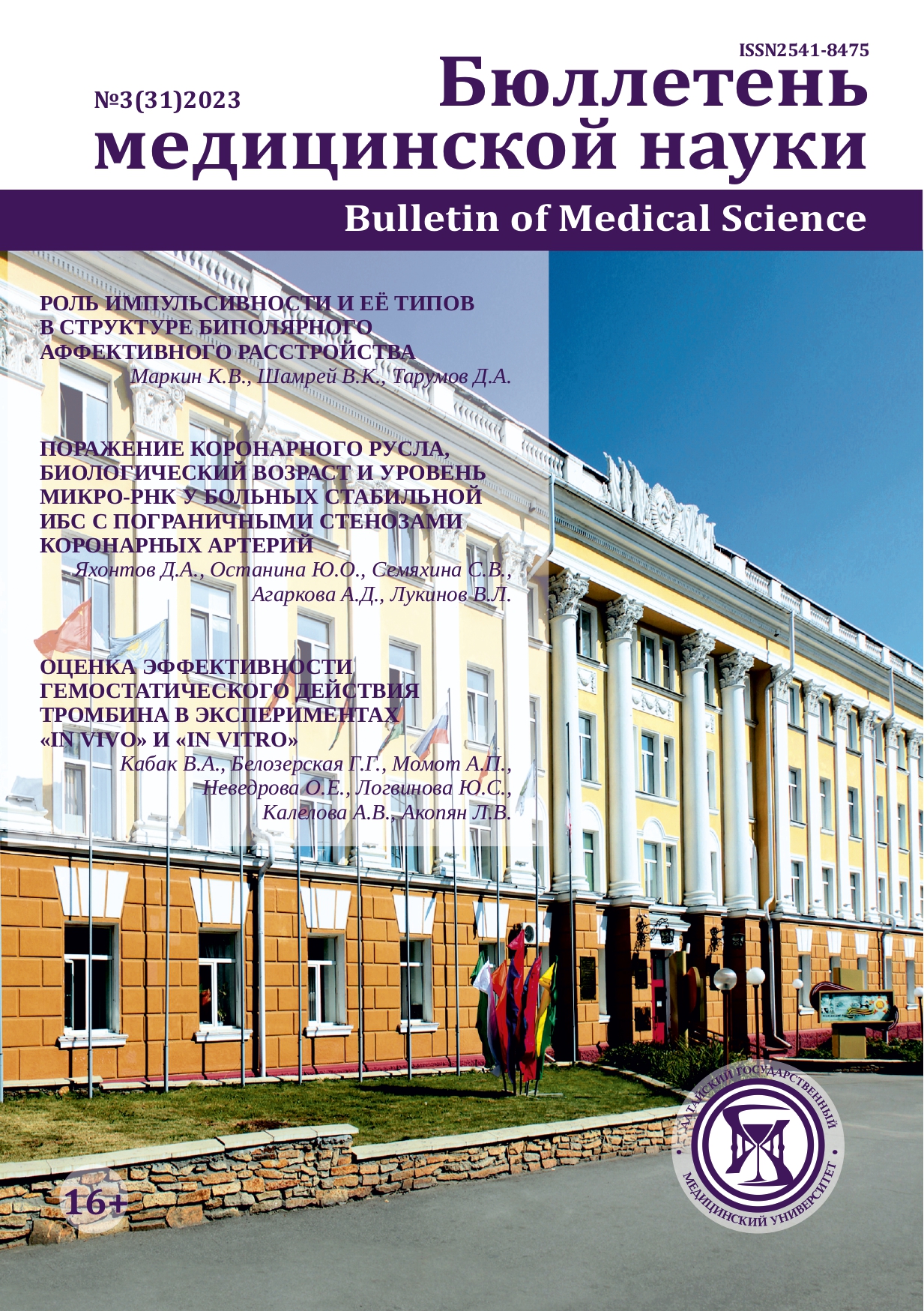CORONARY VASCULAR BED LESION, BIOLOGICAL AGE, AND MICRORNA LEVELS IN STABLE CORONARY ARTERY DISEASE PATIENTS WITH BORDERLINE CORONARY ARTERY STENOSIS
UDC 616.127-005.4:616.13-009.861
DOI:
https://doi.org/10.31684/25418475-2023-3-74Keywords:
coronary artery disease, borderline coronary artery stenosis, biological age, microRNAAbstract
Objective. To compare the nature of coronary vascular bed lesion, vascular wall stiffness depending on passport and biological and age ratio, and to study microRNA (miRNA) levels in different clinical phenotypes stable coronary artery disease (CAD) (pt) with borderline coronary artery (CA) stenosis. Material and methods. 258 stable angina 1-3 class patients (51 - 19.8% women and 207 - 80.2% men) with borderline CA stenosis and the presence of hypertension were included in the comparative descriptive trial of three parallel groups. All pts along with clinical examination and ultrasound of the heart underwent selective coronary angiography. The passport and biological age ratio were evaluated using a VaSera VS-1500N. Determination of miRNA levels was carried out using the PCR method in real time. Statistical calculations were carried out using the RStudio program (version 2022.07.2+576, USA) and the R language (version 4.1.3 (2022-03-10), Austria). Results. One with the CAD phenotype without diabetes mellitus (DM) and obesity (n=115 (44.6%)), the CAD phenotype with type 2 (n = 55 (21.3%)) and CAD with metabolically unfavorable obesity phenotype (MUOP) ([n=88 (34.1%)) prevailed among PTs with borderline CA stenosis when conducting a random sample. The features of the coronary vascular bed lesion are stenosis of the anterior descending artery and the circumflex artery especially in the distal segments in CAD and DM pts. The frequency of the right CA lesion was higher in CAD with the MUOP phenotype, also with more pronounced distal segments. Pts with biological age predominance are characterized by an unborable course of the disease, as a well as cardiometabolic profile. MiRNA concentration assessment revealed increased miRNA-221 levels in CAD with MUOP pts and increased miRNA-22 and -126 levels in CAD and DM pts. Conclusion. Stable patients with CAD with borderline CA stenosis represent a serious condition in prognostic terms due to a long history of hypertension and expressed cardiometabolic associations and a frequent increase in biological age. The assessment of the miRNA levels of these pts is of great interest and represents a promising direction for use in diagnosis and treatment.
Downloads
References
Downloads
Published
How to Cite
Issue
Section
License
Copyright (c) 2023 Давыд Александрович Яхонтов, Юлия Олеговна Останина, Софья Владиславовна Семяхина, Анна Денисовна Агаркова, Виталий Леонидович Лукинов

This work is licensed under a Creative Commons Attribution 4.0 International License.












